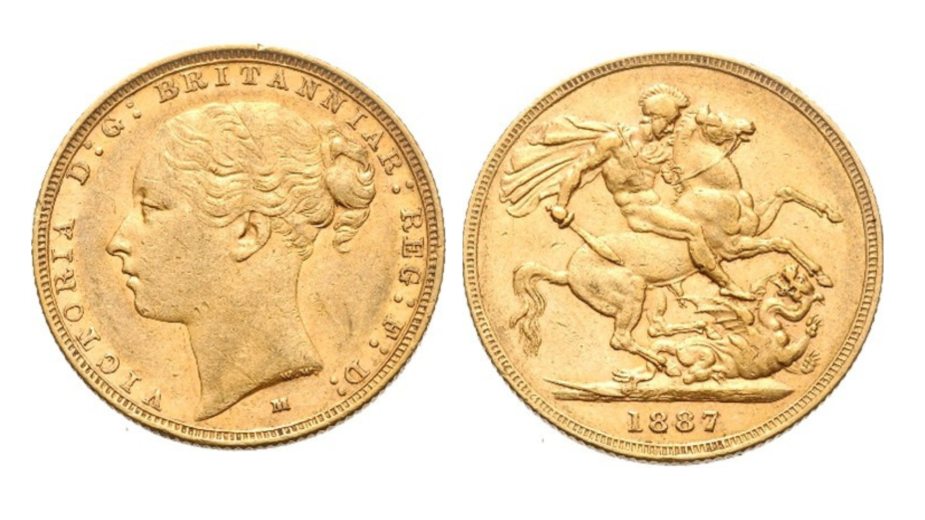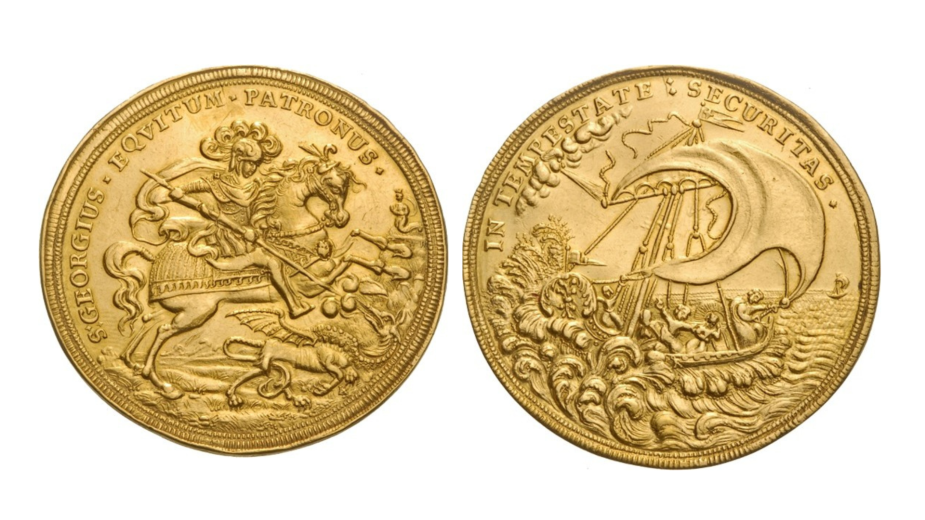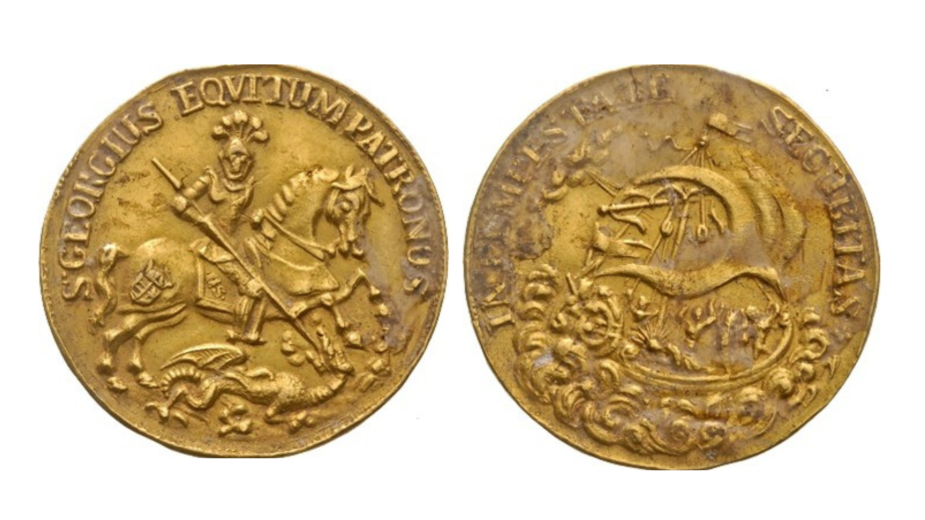
In Hungary, 24 April is Saint George the Dragonslayer Day, probably one of the most famous military saints in the Christian world. His legend has been the inspiration for art for over a thousand years. But the image of the hero is about more than just religion – it also represents courage, strength and honour. According to popular belief, the feast day on April 24 is when spring truly begins. The figure of Saint George has appeared on various currencies around the world. It didn't really take off in Hungary though, and you can only see it on a few special objects made during a short period of time.
The Legend
According to historical records, Saint George was a young Roman soldier who served in the army of Emperor Diocletian. He had a successful career in the army, but when he was ordered to persecute Christians, he resigned his rank. Due to his Christian faith, he too was targeted. He was imprisoned and subjected to torture in an attempt to force him to renounce his Christian beliefs. However, he remained true to his faith and was eventually executed in 303 AD. He was declared a saint in 424, and from then on his worship spread throughout Europe. There are numerous legends surrounding his torture, including that sixty nails were hammered into his skull and that he died and resurrected three times. The significant impact of his devotion is evidenced by the construction of churches dedicated to his honour as early as the first centuries of Christianity.
The legend of Saint George gained prominence in the Middle Ages as the tale of a young man who vanquished a dragon (a symbol of evil). To this day, he is most often depicted in armour on horseback, stabbing the dragon under its legs with a long spear or sword. The defeat of the dragon symbolises not only physical victory, but also spiritual triumph, which continues to motivate people to act heroically and honourably. Therefore, the symbols of the legend signify the victory of good, truth, purity, and courage over evil.
St George depicted on the coins
Saint George is one of the most common images on English money and commemorative coins. The dragon-slaying saint is a central figure in English national identity and the patron saint of the country, which is why he is a common feature on coins. The image first appeared on English coins during the reign of Henry VIII, and subsequently gained popularity again in the mid-19th century.
 Sovereign of Queen Victoria, 1887. The obverse of the coin features a profile portrait of Queen Victoria, while the reverse depicts Saint George fighting a dragon.
Sovereign of Queen Victoria, 1887. The obverse of the coin features a profile portrait of Queen Victoria, while the reverse depicts Saint George fighting a dragon. Saint George is recognised as the patron saint of multiple nations and cities, including Great Britain, Greece, Georgia, Barcelona, Ferrara, Ljubljana, Genoa, and Moscow. This may provide an explanation for the appearance of the dragon slayer motif on Russian coins during the 18th century.
The coins of Saint George from Körmöcbánya
The depiction of Saint George slaying the dragon is a common motif on coins (and even appears in the coats of arms of some countries), but it was not a typical representation in Hungary and does not appear on Hungarian coins. The only domestic revival of this motif can be observed at the turn of the 17th and 18th centuries, during the expulsion of the Turks. At that time, coins bearing the image of Saint George were worn by soldiers as amulets, believed to protect the wearer in battle. This concept was initially developed by a French officer whose life was saved by a thaler coin bearing the image of Saint George, which deflected a bullet that had struck him in the chest. The thaler was one of a series of coins minted by the Counts of Mansfeld, featuring the image of St. George, the family's patron saint, on the obverse.
The story rapidly spread throughout the battlefield. Subsequently, the image of Saint George became synonymous with the wars of the 17th and 18th centuries, which led to the expulsion of the Ottomans from Europe. During this period, the Ottoman Empire was frequently depicted in visual arts alongside the devil (Satan) using the symbol of the dragon. Amulets depicting the dragon slayer were worn to protect and assist their wearers in battle.
Mint in Körmöcbánya swiftly responded to the growing demand for amulets depicting St. George, and from the late 17th century onward, it began to produce a rising number of coins of this nature. On the obverse, Saint George is depicted as a young man wearing armour, usually with an ornate helmet, as he stabs a twisting dragon with a long spear from the back of his rearing horse. The inscription on the obverse refers to Saint George's role as protector. The reverse of the coin features a depiction of a scene from the Gospel of Matthew, in which Christ calms the sea. The image appeared on commemorative coins issued by popes several times in the 16th century, with a similar protective meaning.
 St. George medal struck in the weight of 10 Ducat. The St. George coins from Körmöcbánya retained their popularity well into the 19th century. These coins were minted from gold, silver and copper.
St. George medal struck in the weight of 10 Ducat. The St. George coins from Körmöcbánya retained their popularity well into the 19th century. These coins were minted from gold, silver and copper.  St. George medal, 19th century.
St. George medal, 19th century. Further news
All newsThank you for your kind understanding!
The success of the HUNOR Program is now on display in the exhibition space
The Tarnay family brought silver bowls
Thank you for your kind understanding!
Thank you for your kind understanding!
The success of the HUNOR Program is now on display in the exhibition space
The Tarnay family brought silver bowls
Thank you for your kind understanding!



